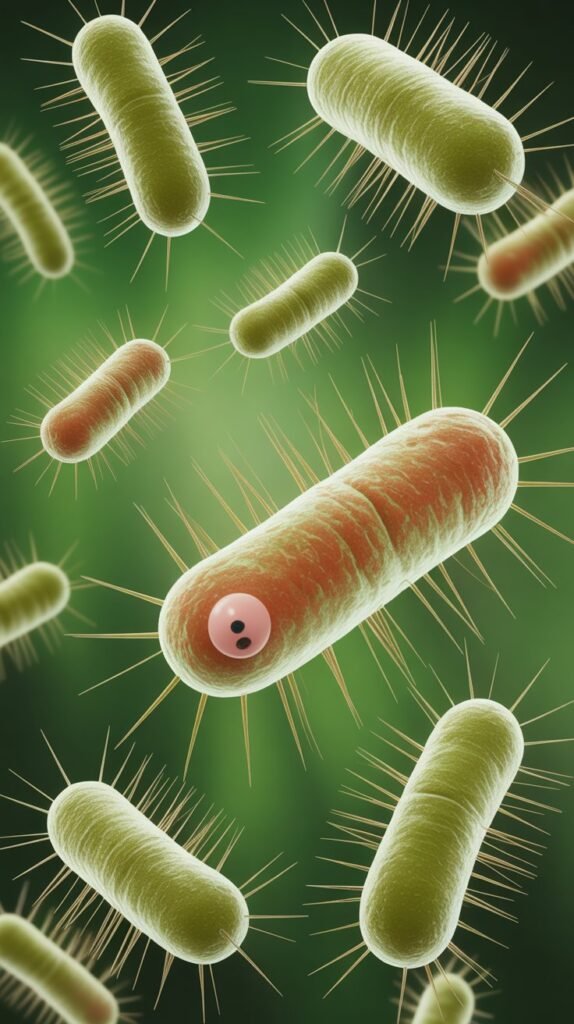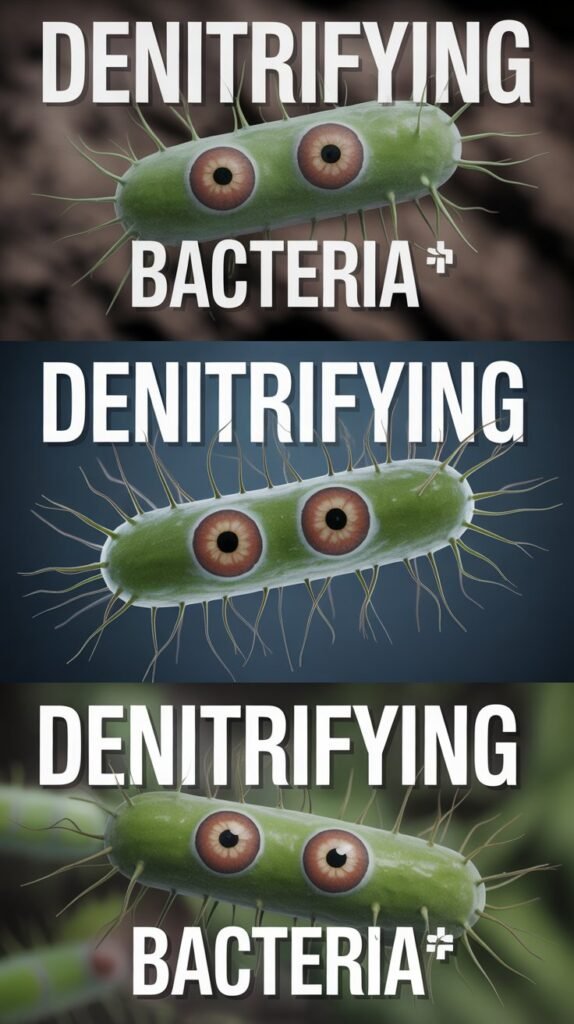Maintaining a healthy and balanced aquarium requires more than just feeding fish and performing occasional water changes. Beneath the surface, an entire ecosystem works together to keep the water safe and clean. One of the most important—and often misunderstood—components of this ecosystem is denitrifying bacteria.
While nitrifying bacteria convert toxic ammonia and nitrite into nitrate, denitrifying bacteria take things one step further by breaking down nitrate, the final byproduct in the nitrogen cycle. High nitrate levels can lead to algae blooms, stressed fish, and long-term water quality issues. Denitrifying bacteria naturally reduce nitrate, restoring balance in freshwater and saltwater tanks.
In this comprehensive long-form guide, we will explain what denitrifying bacteria are, how they work, where they live, how to grow them, how to enhance their activity, and how to use them effectively to maintain a stable aquarium ecosystem.
What Are Denitrifying Bacteria?
Denitrifying bacteria are beneficial microorganisms that convert nitrate (NO₃⁻) into nitrogen gas (N₂) or nitrous oxide (N₂O) under anaerobic or low-oxygen conditions. This process is known as denitrification, and it forms the final stage of the nitrogen cycle.
These bacteria help naturally remove nitrate from aquarium water, preventing toxic buildup and creating a more balanced environment for fish, shrimp, corals, and plants.
Common genera of denitrifying bacteria include:
- Pseudomonas
- Paracoccus
- Thiobacillus
- Bacillus
- Clostridium
- Alcaligenes
While different species have slightly different requirements, they all share one essential trait: they thrive in environments with little to no oxygen.
Why Are Denitrifying Bacteria Important in Aquarium?

Nitrate is less toxic than ammonia or nitrite, but high levels can still cause problems:
- Stress in fish
- Poor coloration
- Reduced immunity
- Stunted growth in fry
- Algae overgrowth
- Poor coral extension (in reef tanks)
- Decreased plant health (in extreme levels)
Denitrifying bacteria solve this problem naturally by breaking down nitrate into harmless nitrogen gas, which escapes the tank into the atmosphere.
Key Benefits of Denitrifying Bacteria
1. Reduce Nitrate Levels Naturally
Instead of relying solely on water changes, denitrifying bacteria continuously and naturally remove nitrate.
2. Prevent Algae Blooms
High nitrate fuels green algae and cyanobacteria. Lower nitrate helps maintain a clean, balanced system.
3. Improve Fish Health
Fish are less stressed in low nitrate environments and live longer, healthier lives.
4. Support Reef Aquariums
Corals require low nutrient levels for proper growth and coloration. Denitrifying bacteria help maintain ultra-low nitrate environments.
5. Stabilize the Nitrogen Cycle
They complete the final stage of the nitrogen cycle, ensuring long-term equilibrium in the tank.
How Denitrifying Bacteria Work: Understanding the Denitrification Process
Denitrification occurs through a series of chemical transformations:
Step 1: Nitrate (NO₃⁻) → Nitrite (NO₂⁻)
Denitrifying bacteria first convert nitrate into nitrite.
Step 2: Nitrite (NO₂⁻) → Nitric Oxide (NO)
Next, nitrite is converted into nitric oxide.
Step 3: Nitric Oxide (NO) → Nitrous Oxide (N₂O)
Nitric oxide is transformed into nitrous oxide.
Step 4: Nitrous Oxide (N₂O) → Nitrogen Gas (N₂)
Finally, the bacteria release nitrogen gas, which simply bubbles out of the water into the atmosphere.
This entire reaction only occurs under anoxic (very low oxygen) or anaerobic (no oxygen) environments—a requirement unique to denitrifying bacteria.
Where Denitrifying Bacteria Live in an Aquarium

Unlike nitrifying bacteria that require oxygen and colonize filter media and surfaces, denitrifying bacteria must live in oxygen-poor environments.
Typical places where they thrive include:
1. Deep Substrate Layers
In sand beds over 3–4 inches deep, oxygen is consumed in the upper layers, creating low-oxygen pockets beneath.
2. Porous Rock (Especially in Reef Tanks)
Live rock and lava rock contain deep internal pores with limited oxygen flow—perfect for denitrification.
3. Anaerobic Chambers
Filters or reactors designed to restrict oxygen allow colonies of denitrifying bacteria to grow.
4. Biofilters with Specialized Media
High-surface-area anaerobic media, such as:
- Sintered glass
- Ceramic biomedia
- De-nitrification blocks
These materials offer internal zones where oxygen slowly diminishes.
5. Organic Detritus Zones
Dead spots behind rocks or low-flow areas sometimes host limited denitrifying activity.
Denitrifying bacteria do NOT live on aquarium glass or in high-flow filters—they cannot survive in oxygen-rich environments.
How to Increase Denitrifying Bacteria in Your Aquarium
If you want to naturally reduce nitrate, you’ll need to support denitrifying bacteria. Here’s how to encourage their growth:
1. Create Anaerobic Zones in the Substrate
A deep sand bed can provide excellent homes for denitrifying bacteria.
Recommended depth:
- Freshwater: 3–4 inches
- Saltwater reef tanks: 4–6 inches
Fine sand works better than gravel because it restricts oxygen penetration.
2. Add Porous Rock
Rocks with deep pores create natural anaerobic zones.
Best choices include:
- Live rock (saltwater)
- Lava rock
- Sintered glass rock
- Ceramic blocks
These materials allow water to slowly pass through, supporting denitrification in the internal layers.
3. Use Denitrifying Filters or Reactors
Advanced aquarists often use:
- Anaerobic biofilters
- Sulfur-based denitrification reactors
- Coil denitrators
- Specialized anaerobic chambers
These devices are specifically designed to house denitrifying bacteria.
4. Provide a Carbon Source
Denitrifying bacteria require a carbon source to break down nitrate. You can supply it naturally or manually through:
- Fish waste
- Decaying plant matter
- Carbon dosing (vodka, vinegar, or commercially produced carbon sources)
Many aquarists use controlled carbon dosing to dramatically reduce nitrate.
5. Maintain Moderate Nitrate Levels
Denitrifying bacteria need nitrate to survive. If nitrate drops too low, their populations decline. A small amount (2–10 ppm) is ideal to keep them active.
What Kills Denitrifying Bacteria?

Denitrifying bacteria are generally hardy, but certain conditions can cause their decline:
1. Too Much Oxygen
Oxygen-rich environments kill or suppress denitrifying bacteria.
2. Chemical Treatments
Medications, antibiotics, and some algae treatments harm all beneficial bacteria.
3. Overcleaning the Substrate
Deep vacuuming removes anaerobic zones.
4. Insufficient Nitrate
If nitrate levels reach zero, denitrifying bacteria have no food source.
5. Low Organic Carbon
Without carbon, these bacteria cannot convert nitrate efficiently.
6. Sudden pH Changes
Extreme pH fluctuations disrupt their biological activity.
Denitrifying Bacteria vs. Nitrifying Bacteria
Many aquarists confuse nitrifying and denitrifying bacteria, but they serve entirely different roles.
| Feature | Nitrifying Bacteria | Denitrifying Bacteria |
|---|---|---|
| Function | Convert ammonia → nitrite → nitrate | Convert nitrate → nitrogen gas |
| Oxygen Requirement | High oxygen | Low or no oxygen |
| Location | Filter media, surfaces | Deep sand, porous rock, anaerobic zones |
| Role | Prevent ammonia/nitrite toxicity | Reduce nitrate levels |
| Needed in all tanks? | Yes | Useful, especially high-bioload setups |
Both are essential, but denitrifying bacteria complete the nitrogen cycle by eliminating nitrate from the system.
Denitrifying Bacteria in Freshwater vs. Saltwater Aquariums
Freshwater Aquariums
Denitrifying bacteria work effectively in:
- Deep gravel beds
- Planted tanks
- Low-flow zones
- Porous biomedia
Freshwater tanks typically have lower nitrate than saltwater setups, but denitrification still plays a crucial role in maintaining balance.
Saltwater and Reef Aquariums
Saltwater systems—especially reef tanks—benefit greatly from denitrifying bacteria because corals thrive in nutrient-poor environments.
Saltwater tanks use:
- Live rock
- Deep sand beds
- Sump refugiums
- Denitration reactors
Saltwater denitrifying bacteria are highly efficient due to abundant porous rock.
Do You Need Denitrifying Bacteria Supplements?
Many companies sell bottled denitrifying bacteria. While not essential, they can be helpful in certain situations.
Useful When:
- You have high nitrate levels
- You recently cleaned or replaced substrate
- You installed new rock or bio media
- You want to speed up denitrification
- After medication treatments
- In high bioload aquariums
Not Necessary When:
- Tank is well-cycled
- Nitrate levels are already under control
- You have a mature deep sand bed or live rock system
Supplements can accelerate the process, but natural growth is always more stable in the long term.
Signs You Need More Denitrifying Bacteria
You may need to boost your denitrifying bacteria population if you notice:
- Nitrate consistently above 40–80 ppm
- Repeated algae blooms
- Corals appear dull or closed
- Fish show signs of stress
- Water changes are not reducing nitrate
- Green water or cloudy water persists
These symptoms suggest that nitrate is accumulating faster than it is being removed.
How to Prevent Nitrate Buildup Naturally
Denitrifying bacteria are a key part of nitrate control, but you can combine multiple strategies to keep nitrate low.
1. Reduce Overfeeding
Uneaten food rapidly breaks down into nitrate.
2. Maintain a Strong Biological Filter
Nitrifying and denitrifying bacteria work together.
3. Use Live Plants
Plants absorb nitrate as fertilizer.
4. Add Floating Plants
Fast-growing species like hornwort and duckweed consume nitrate quickly.
5. Clean Detritus Regularly
Organic waste increases nitrate over time.
6. Maintain Flow and Oxygen in the Upper Layers
Healthy water movement ensures nitrification and denitrification remain in balance.
7. Use High-Surface-Area Bio Media
The more surfaces available, the more bacteria can grow.
Advanced Techniques for Denitrification
If you want to push nitrate even lower, especially in reef systems, consider these advanced methods.
1. Carbon Dosing
Many aquarists add controlled amounts of:
- Vodka
- Vinegar
- Sugar
- Commercial carbon sources
This stimulates denitrifying bacteria, increasing nitrate removal.
2. Sulfur Denitrators
These reactors use sulfur as an energy source, enabling extremely efficient nitrate removal.
3. Deep Sand Beds
Common in reef aquariums, deep sand beds allow both nitrifying and denitrifying bacteria to grow in layers.
4. Refugiums
Marine refugiums with macroalgae help reduce nitrate, reducing the load on denitrifying bacteria.
5. Low-Flow Zones
Areas with slow movement encourage anaerobic activity.
Common Mistakes When Trying to Grow Denitrifying Bacteria
1. Adding Too Much Oxygen
Strong flow and aeration inhibit denitrification.
2. Overcleaning the Substrate
Vacuuming deep layers removes bacterial colonies.
3. Removing Porous Rock
Reduces available anaerobic areas.
4. Overdosing Chemicals
Medications often destroy beneficial bacterial populations.
5. Relying Only on Water Changes
Water changes dilute nitrate but don’t address the root cause.
Conclusion
Denitrifying bacteria are a vital part of the aquarium ecosystem, completing the nitrogen cycle by converting harmful nitrate into harmless nitrogen gas. Whether you maintain a freshwater community tank or a sophisticated reef aquarium, these bacteria play a crucial role in keeping your water parameters stable, your fish stress-free, and your system balanced.
By understanding how denitrifying bacteria work, where they thrive, and how to boost their activity, you can maintain low nitrate levels naturally and effortlessly. Whether through deep sand beds, porous rocks, anaerobic chambers, or carbon dosing, the right combination will create a self-sustaining denitrification environment.
Healthy aquariums rely on healthy bacteria—and denitrifying bacteria are the unsung heroes responsible for long-term stability.
FAQs About Denitrifying Bacteria
1. Do denitrifying bacteria need oxygen?
No. They require low or zero oxygen environments to survive and function.
2. Where do denitrifying bacteria live in tanks?
They live in deep sand beds, porous rocks, anaerobic filters, and low-flow zones.
3. Can denitrifying bacteria reduce ammonia or nitrite?
No. They only reduce nitrate, not ammonia or nitrite.
4. Do water changes remove denitrifying bacteria?
No, because they live on surfaces, not in the water column.
5. How long do they take to establish?
Typically 4 to 12 weeks, depending on conditions.
6. Do planted tanks need denitrifying bacteria?
Yes, although plants help remove nitrate, bacteria still contribute to stability.
7. Can bottled denitrifying bacteria work?
Yes, they can jump-start the process, especially in new or struggling tanks.
8. Why is nitrate still high even with denitrifying bacteria?
Possible reasons include high bioload, insufficient anaerobic zones, or inadequate carbon sources.
9. Can too many denitrifying bacteria be a problem?
Rarely. If nitrate drops to zero, bacterial populations naturally decline.

